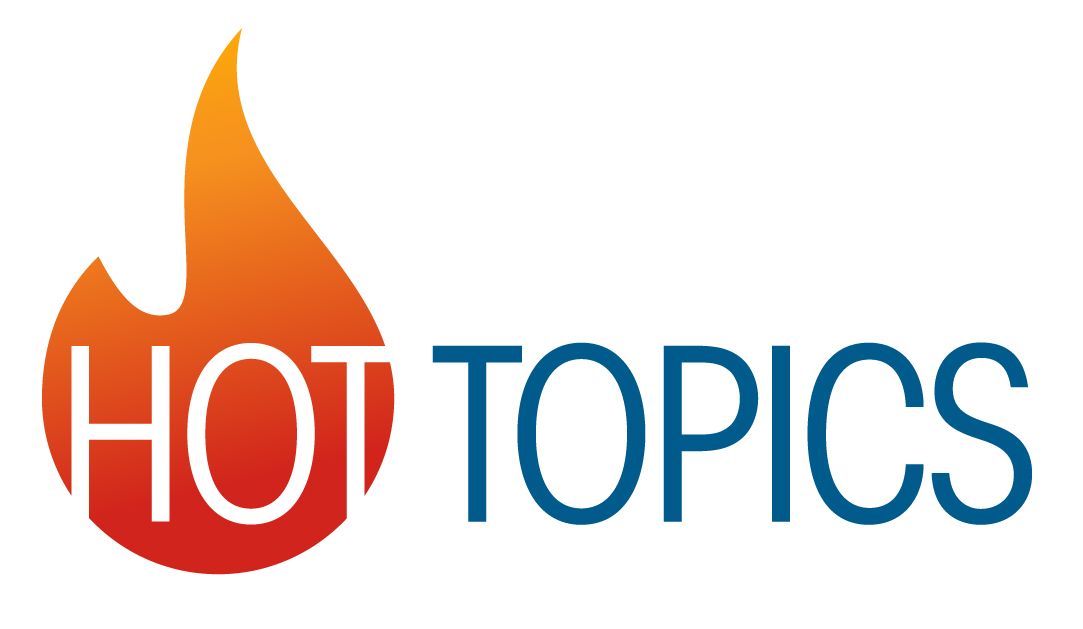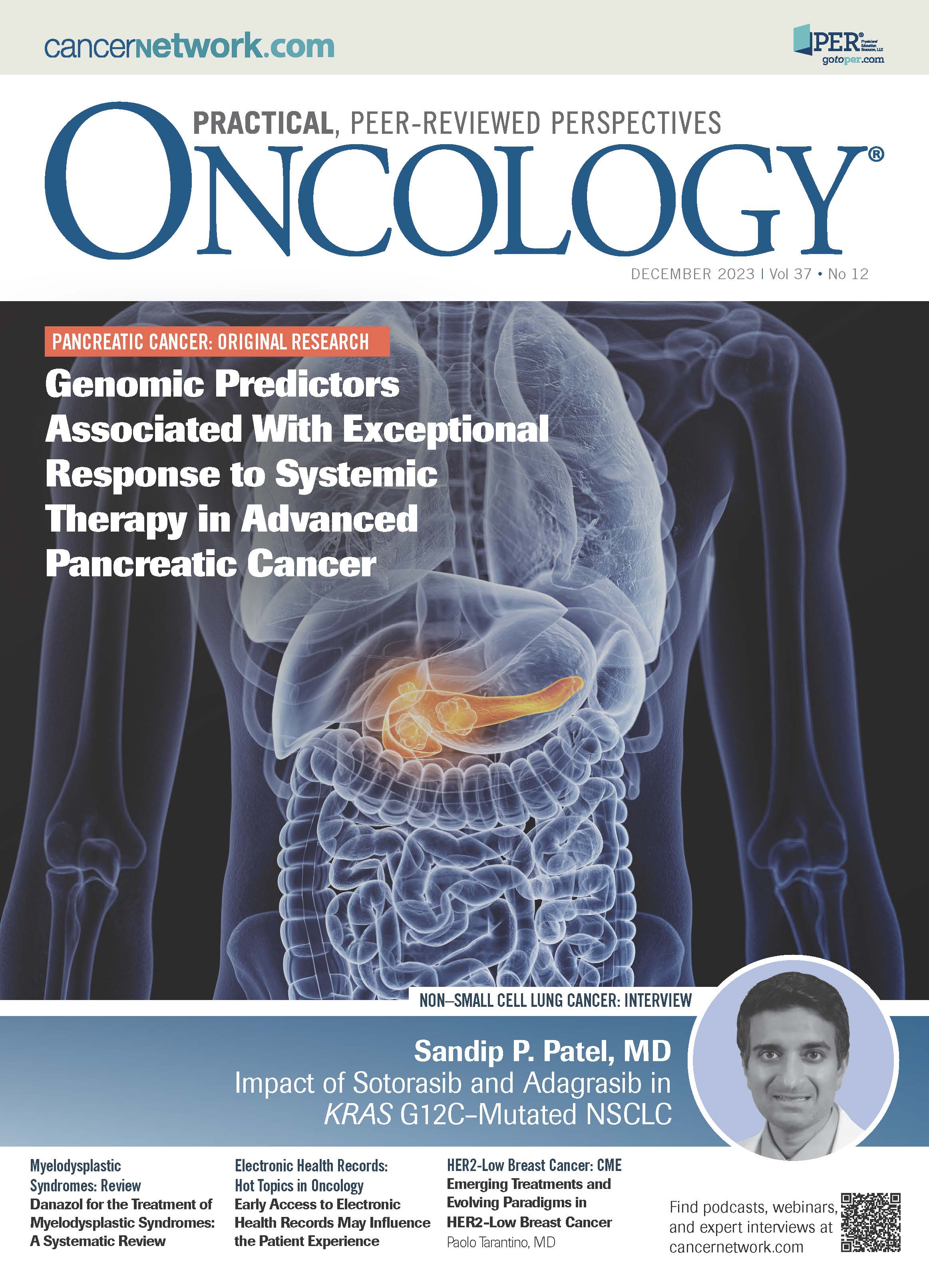Early Access to Electronic Health Records May Influence the Patient Experience
In a recent Hot Topics column, Mehmet Sitki Copur, MD, FACP, et al discussed the pros and cons of patients receiving test results early through electronic medical records.
In a recent Hot Topics column, Mehmet Sitki Copur, MD, FACP, et al discussed the pros and cons of patients receiving test results early through electronic medical records.

With the advent of the internet, people are accustomed to being able to access data on demand. For example, to check their latest financial details, they log into their bank’s website; to get information about their school-aged children’s needs, they can routinely access a portal developed by their school; and so on. Implemented on April 5, 2021, the 21st Century Cures Act, known as the “Cures Rule,” requires health care providers to allow patients access to all the health information in their electronic health records (EHRs). In a way, this has led to a disruptive innovation for health care organizations: the development of patient portals. Now, patients can take an active role in their care by having nearly instant access to their own medical records. However, the advantages of accessing EHRs by patient portals should be weighed against the disadvantages of this novelty.
Disadvantages of Patient Portal Access
EHR accessibility may pose harm due to a lack of security during information dissemination. This has been a major concern for industries such as finance, defense, and health. The fundamental security goals for all these industries, including EHRs, are confidentiality, integrity, and availability.1 Promoting patients’ access to their own EHRs could have an impact on activities, such as health information disclosures on job applications or applying for life insurance.2
Defined as the ability to acquire and understand medical information to follow treatment and make health decisions, health literacy has been reported in only 53% of adults. If a user does not understand the medical terms within the patient portal, early access to results will more likely cause confusion and anxiety than any help.3
One study found that abnormal test results caused confusion, anxiety, and concerns for 56% of patients, including 21% of patients who had normal results. Even if a test result is not recognizably negative, a patient portal presentation of an uninterpreted report can be unpleasant to patients and certainly unproductive. Nearly two-thirds of patients who obtained test results via a portal received no explanatory information about the findings, and half ended up conducting online searches or calling their doctors.4
Medical professionals should be aware of how to choose the right clinical terms and when to enter major diagnostic information. Seeing previously undisclosed information, derogatory language, or inconsistencies in notes may cause annoyance and concern in patients.5 Most laboratory test results are not created with the patients in mind; they are often complicated and not easily understandable by nonmedical professionals.
Specifically, pathology reports may be challenging to comprehend in light of a cancer diagnosis. Miscommunication may happen between a patient and their clinician after a pathology report has been uploaded to the patient portal, and the patient in turn reaches out to their provider for clarification. Individual providers may feel challenged in the unfamiliar realm of properly interpreting a cancer diagnosis without an opportunity for the health care team to discuss it in the setting of a multidisciplinary tumor board approach.
Although it is intended to promote patient empowerment, instant access to results through patient portals can be a mixed blessing. A challenge occurs when abnormal results are uploaded and providers are not instantly available to properly interpret these results for patients. Unnecessary anxiety may occur due to an out-of-reference value for a nonfasting glucose level, red blood cell distribution width, mean platelet volume, or stable elevated liver enzyme levels from fatty liver disease, which are not clinically relevant or significant. For a patient to properly understand the significance of these results, a health care provider will have to be available to interpret for them. Having patients call about test results or ask questions may create more demand on the already strained health care providers’ time. A study by Han et al suggests an increase in consultation times if patients have access to their own EHRs via patient portals.6
Some patients would prefer to remain uninformed and leave all clinical decisions to their providers to share and explain during their visit. Receiving copious emails and texts can create a need for them to check these results. Patients with long-term conditions with greater needs to trace their disease trajectories and those experiencing recent incident health events are more likely to benefit from accessing their EHRs, which might work better in the primary care settings as opposed to cancer care.
Patients who are 60 years or older use the greater proportion of health care, are more likely to have cancer, and are less likely to adopt EHR portals. Reasons for this include having less access to and experience with technology, less education, and low health literacy and numeracy skills.7-9 Alienation between patients and clinicians can occur for those who do not or cannot use these tools. Of note, with early access to results, patients may discover a cancer diagnosis prior to meeting with the clinician, which can cause a longer patient-clinician interaction when the appointment occurs.10,11
Finally, studies have shown promoting EHR access to minors can also be a challenge. Although the patient might welcome such access, it could raise concerns among parents, caregivers, and guardians regarding the level of details visible to the patient.12,13
Advantages of Patient Portal Access
In recent years, the addition of preappointment paperwork to EHRs has lessened the administrative burden on medical offices. Administrative staff, who used to spend a great deal of time copying medical records and updating the audit trail, can now simply direct the patient to their portal so they can update the information electronically.
In addition to instant access to medical records, patient portals can provide appointment scheduling, telehealth features, and educational content to help patients better understand their health conditions. The benefits can range from increased awareness and medication adherence, reduced anxiety, and reassurance to better doctor-patient relationships and a positive impact on consultations. In patients with chronic conditions, improvements in outcomes have been observed in various areas, including medication adherence, blood pressure, glucose level control, improved functional status, and reduced high-cost health care utilization.14-20
The ability to access EHRs may also help patients to actively participate and reduce any inaccuracies within their EHR, which in turn may lead to more reliable health records and enhanced patient-provider communication.21,22 Patient access to EHRs can also help patients to be better prepared and well informed about their medical issues prior to their doctor visits.22 Moreover, the ability of the patients to provide a reliable medical history to a provider by referencing their own EHR through the mobile phone in an emergency department or urgent care setting can significantly improve the quality of care.
Finally, for both patients and health care professionals, not only having access to EHRs for test results but also having the ability to book appointments and order prescriptions online holds valuable benefits.10,23,25 Better health outcomes seem to result from patient empowerment through health care information exchange to aid self-care, informed decision-making, enhanced medical adherence, and improved trust between patients and medical professionals.
Like in anything else, continued long-term awareness, familiarity with its use, and education on how best to use this tool will help EHRs evolve into a more efficient and appropriate usage level in time, proving its value with more pros than cons.
References
- Haas S, Wohlgemuth S, Echizen I, Sonehara N, Müller G. Aspects of privacy for electronic health records. Int J Med Inform. 2011;80(2):e26-e31. doi:10.1016/j.ijmedinf.2010.10.001
- Honeyman A, Cox B, Fisher B. Potential impacts of patient access to their electronic care records. Inform Prim Care. 2005;13(1):55-60. doi:10.14236/jhi.v13i1.579
- Office of the Surgeon General (US); Office of Disease Prevention and Health Promotion (US). Proceedings of the Surgeon General's Workshop on Improving Health Literacy: September 7, 2006, National Institutes of Health, Bethesda, MD. Rockville (MD): Office of the Surgeon General (US); 2006. Panel 1: Health Literacy, Literacy, and Health Outcomes. Available from: https://www.ncbi.nlm.nih.gov/books/NBK44260/
- Giardina TD, Baldwin J, Nystrom DT, Sittig DF, Singh H. Patient perceptions of receiving test results via online portals: a mixed-methods study. J Am Med Inform Assoc. 2018;25(4):440-446. doi:10.1093/jamia/ocx140
- Woods SS, Schwartz E, Tuepker A, et al. Patient experiences with full electronic access to health records and clinical notes through the My HealtheVet Personal Health Record pilot: qualitative study. J Med Internet Res. 2013;15(3):e65. doi:10.2196/jmir.2356
- Han HR, Gleason KT, Sun CA, et al. Using patient portals to improve patient outcomes: systematic review. JMIR Hum Factors. 2019;6(4):e15038. doi:10.2196/15038
- Sakaguchi-Tang DK, Bosold AL, Choi YK, Turner AM. Patient portal use and experience among older adults: systematic review. JMIR Med Inf. 2017;5(4):e38. doi:10.2196/medinform.8092
- Nahm ES, Zhu S, Bellantoni M, et al. Patient portal use among older adults: what is really happening Nationwide? J Appl Gerontol. 2020;39(4):442-450. doi:10.1177/0733464818776125
- Zhao JY, Song B, Anand E, et al. Barriers, facilitators, and solutions to optimal patient portal and personal health record use: a systematic review of literature. AMIA Annu Symp Proc. 2018;2017:1913-1922.
- Rexhepi H, Åhlfeldt RM, Cajander Å, Huvila I. Cancer patients’ attitudes and experiences of online access to their electronic medical records: a qualitative study. Health Informatics J. 2018;24(2):115-124. doi:10.1177/1460458216658778
- Robinson S, Reed M, Quevillon T, Hirvi E. Patient perceptions and interactions with their web portal-based laboratory results. BMJ Health Care Inform. 2019;26(1):0. doi:10.1136/bmjhci-2019-000012
- Bourgeois FC, Desroches CM, Bell SK. Ethical challenges raised by OpenNotes for pediatric and adolescent patients. Pediatrics. 2018;141(6):e20172745. doi:10.1542/peds.2017-2745
- Francis LP. When patients interact with EHRs: problems of privacy and confidentiality. SSRN. September 27 ,2012. [Accessed date here]. https://papers.ssrn.com/sol3/papers.cfm?abstract_id=2152693
- Otte-Trojel T, de Bont A, Rundall TG, van de Klundert J. How outcomes are achieved through patient portals: a realist review. J Am Med Inform Assoc. 2014;21(4):751-757. doi:10.1136/amiajnl-2013-002501
- Apter AJ, Localio AR, Morales KH, et al. Home visits for uncontrolled asthma among low-income adults with patient portal access. J Allergy Clin Immunol. 2019;144(3):846-853.e11. doi:10.1016/j.jaci.2019.05.030
- Sarkar U, Lyles CR, Parker MM, et al. Use of the refill function through an online patient portal is associated with improved adherence to statins in an integrated health system. Med Care. 2014;52(3):194-201. doi:10.1097/MLR.0000000000000069
- Kruse CS, Bolton K, Freriks G. The effect of patient portals on quality outcomes and its implications to meaningful use: a systematic review. J Med Internet Res. 2015;17(2):e44. doi:10.2196/jmir.3171
- Manard W, Scherrer JF, Salas J, Schneider FD. Patient portal use and blood pressure control in newly diagnosed hypertension. J Am Board Fam Med. 2016;29(4):452-459. doi:10.3122/jabfm.2016.04.160008
- Jackson SL, DesRoches CM, Frosch DL, Peacock S, Oster NV, Elmore JG. Will the use of patient portals help to educate and communicate with patients with diabetes? Patient Educ Couns. 2018;101(5):956-959. doi:10.1016/j.pec.2017.11.004
- Sorondo B, Allen A, Fathima S, Bayleran J, Sabbagh I. Patient portal as a tool for enhancing patient experience and improving quality of care in primary care practices. EGEMS (Wash DC). 2017;4(1):1262. doi:10.13063/2327-9214.1262
- Ross ES, Lin CT. The effects of promoting patient access to medical records: a review. J Am Med Inform Assoc. 2003;10(2):129-138. doi:10.1197/jamia.m1147
- Akesson KM, Saveman BI, Nilsson G. Health care consumers’ experiences of information communication technology–a summary of literature. Int J Med Inform. 2007;76(9):633-645. doi:10.1016/j.ijmedinf.2006.07.001
- Redelmeier DA, Kraus NC. Patterns in patient access and utilization of online medical records: analysis of MyChart. J Med Internet Res. 2018;20(2):e43. doi:10.2196/jmir.8372
- Pyper C, Amery J, Watson M, Crook C. Patients’ experiences when accessing their on-line electronic patient records in primary care. Br J Gen Pract. 2004;54(498):38-43.
- Tsai CC, Starren J. Patient participation in electronic medical records. JAMA. 2001;285(13):1765.

How Supportive Care Methods Can Improve Oncology Outcomes
Experts discussed supportive care and why it should be integrated into standard oncology care.